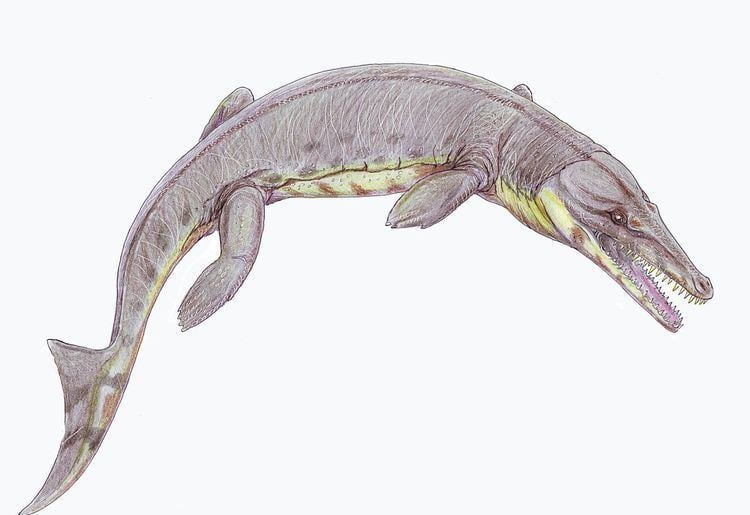Higher classification Metasuchia | Phylum Chordata Clade Neosuchia | |
 | ||
Lower classifications | ||
Neosuchia is a clade within Mesoeucrocodylia that includes all modern extant crocodilians and their closest fossil relatives. It is defined as the most inclusive clade containing all crocodylomorphs more closely related to Crocodylus niloticus (the Nile Crocodile) than to Notosuchus terrestris. Neosuchia is very diverse and may be polyphyletic, as the clade has undergone many revisions since it was first named in 1988. Neosuchians first appear in the Early Jurassic with the earliest known goniopholid Calsoyasuchus, which lived during the Sinemurian and Pliensbachian stages.
Contents
Characteristics
A tooth notch between the maxilla and premaxilla is a basal characteristic of the Neosuchia, although it is lost in some more derived forms, most notably alligatorids.
Classification
Phylogeny
Below is a cladogram showing the phylogenetic relationships of neosuchians from Buscalioni et al., 2011:
In 2012, paleontologists Mario Bronzati, Felipe Chinaglia Montefeltro, and Max C. Langer conducted a broad phylogenetic analysis to produce supertrees of Crocodyliformes, including 184 species. The most parsimonious trees were highly resolved, meaning the phylogenetic relationships found in the analysis were highly likely. Below is a consensus tree from the study:
